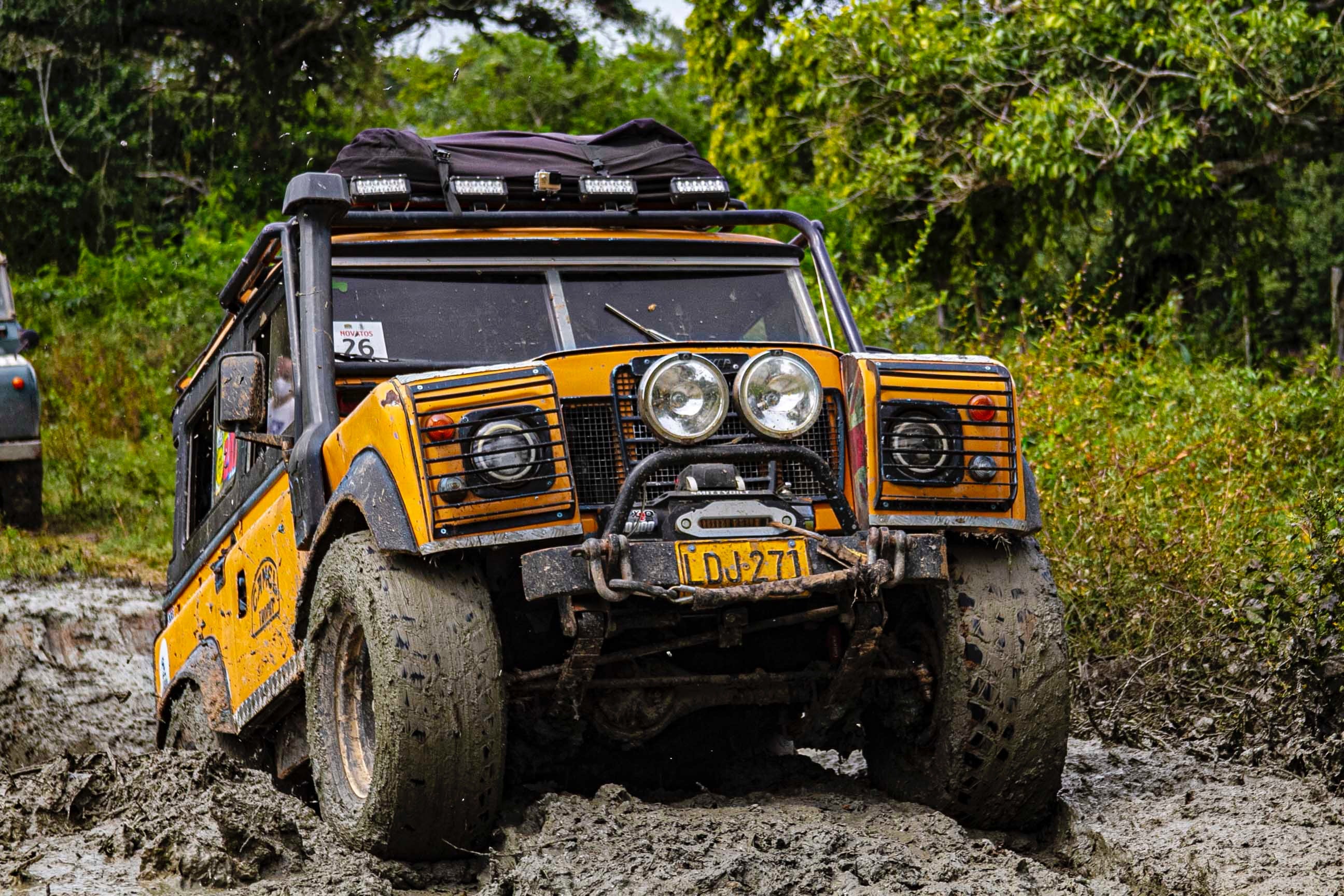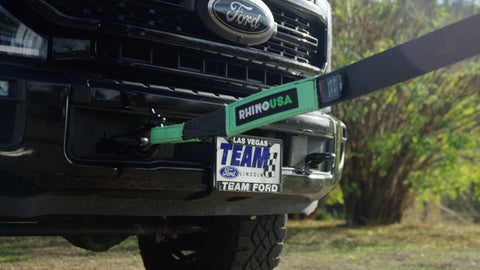
What Recovery Gear Do You Need For Off-road and Overlanding?
Off-roading and overlanding give you the opportunity to pursue thrilling adventures, but it's also important to take note of the risks involved. There are plenty of ways you can get in trouble while out in your vehicle, whether it's breaking down, crashing, or getting stuck somewhere. Whatever happens, it's good to be prepared, and having the right recovery gear is an essential part of that.
The right recovery equipment can get you out of some sticky situations. You can use your equipment to rescue yourself, rather than have to wait for someone else to come and help you. Whether you're traveling alone or with others, you'll be grateful that you're able to recover your vehicle yourself if you ever get stuck.
Featured Product: Rhino USA Ultimate Kinetic Recovery Kit
If you want to make sure your vehicle is outfitted with the best overlanding and off-road recovery equipment, there are a few things you'll need. Additionally, it's smart to practice using your equipment so that you're not suddenly faced with having to work it out in an emergency.
Kinetic Recovery Rope
A recovery rope is one of the most basic but necessary items you should have as part of your recovery kit. They're versatile and can be used for many different things, including towing out a stuck vehicle. Rhino USA's Kinetic Recovery Rope is a great choice, available in several different sizes. These kinetic ropes have plenty of stretch and can store up to four times more energy than a tow strap for a smooth and safe recovery. Rhino's kinetic ropes are backed by a lifetime guarantee too, so you can rely on them to be there for you when you need them. They also come with a handy, durable storage bag, so you can store them neatly.

Tow Strap
Tow straps are an alternative option for towing. One of the benefits of a tow strap is that it's lower in price, so they might appeal to you if you're on a budget. Rhino USA's super strong tow straps are made from an exclusive poly/silk webbing, which makes them both soft and extremely tough. Although they don't have the stretch of a recovery rope, they're still useful. Recovery tow straps are usually used for towing alone, whereas kinetic ropes are a good pick for vehicle-to-vehicle recovery. You can choose from a few different sizes to meet your needs, and you get a carry bag that has space for plenty of other accessories.

Soft Shackles
In addition to having a rope or strap to pull you out if you get stuck, having a few shackles is also important. Shackles have plenty of different applications, so they can really help you out if you're in a bind. While shackles are traditionally made from hard materials, Rhino USA's soft shackles are an excellent alternative. Soft shackles are easy to store and they're malleable, giving them more flexibility and allowing you to use them in more ways.
Rhino's soft shackles have been tested to show a break strength of more than 46,000 and they feature a sleeve to provide extra durability. They also won't sink in mud or soft sand, staying above ground for a more efficient recovery.
A Shovel
Everyone needs a shovel if they're planning on going off-roading or overlanding. It gives you an essential tool to dig your way out of any trouble. Of course, shovels can take up a lot of space, but that's where a collapsible or folding shovel can come in handy. When you can collapse or fold your shovel, it takes up much less space so it's easier to justify keeping it in your recovery gear. The Rhino USA Folding Survival Shovel is a recovery must-have for your Jeep, 4x4, or ATV. Made from heavy-duty carbon steel, it's the multifunctional tool you'll always want to have to hand. It folds neatly in two places to make it compact and fits into a small, heavy-duty carry bag.
Your shovel will help you to dig your wheels out and prepare the ground for recovering your vehicle. Shovels are always useful for other purposes too, especially if you're camping. You never know when you might need to dig a hole, move aside some earth, or use your shovel for other purposes.
This shovel also comes with a pick, which is also useful to have. If you need to remove stones or even chip away at some ice, having a pick available can be the better tool over a shovel.

Winch
Of course, you should also make sure you have a winch to go with all of your other recovery equipment. A good winch gives you the power of self-recovery, but make sure you get one that's suitable for your needs.
MUST READ: When to Use a Winch vs Kinetic Rope
Traction Boards
Traction boards can be used for a range of purposes, so they're always useful to have as part of your recovery kit. They can help to provide more traction for your wheels when you're stuck, and you can sometimes dig to get them into place or use them in combination with a winch. Rhino USA traction boards are made with reinforced nylon and can withstand 10 tons of pressure. They're an excellent accessory to have for self-recovery.

Tire Repair Kit
You never want your trip to be ruined by a busted tire. A tire repair kit will be there for you when you need it most so that you can make the necessary repairs and be on your way. Tire repair kits from Rhino USA include a full 86-piece repair kit or, if you're short on space, a compact 14-piece kit. Both kits contain essential tools for repairing tires while you're off-roading or overlanding.
Communication Tools
Don't forget to take some communication tools with you when you're off-roading or overlanding. It's one of the most important things you can have with you, whether it's radio or GPS equipment.
Be Prepared with Rhino USA
Get ready for any off-roading or overlanding trip with recovery gear from Rhino USA. Our equipment comes from an American-owned and family-operated company offering lifetime warranties. All of our equipment is designed and lab tested in the USA to ensure you get the very best quality.
FAQ's
How do I choose the right recovery gear for my off-road and overlanding adventures?
When choosing recovery gear for off-road and overlanding, consider factors such as the weight and size of your vehicle, the terrain you'll be traversing, and the specific recovery scenarios you anticipate encountering. It's important to invest in high-quality gear that matches your vehicle's weight and has appropriate weight ratings. Additionally, consider the durability, ease of use, and compatibility with other recovery equipment. Researching and seeking advice from experienced off-roaders or professionals can also help you make informed decisions when selecting the right recovery gear for your needs.
How do I properly maintain and inspect my off-road recovery gear?
Regular maintenance and inspections are crucial for ensuring the effectiveness and safety of your off-road recovery gear. Here are some general tips:
- Inspect your gear before each use, checking for any signs of wear, fraying, or damage.
- Clean and dry your gear after each use to prevent rust and maintain its integrity.
- Store your gear in a clean, dry, and protected environment.
- Follow the manufacturer's guidelines for maintenance and storage.
- Replace any damaged or worn-out gear promptly to maintain optimal safety.
- Consider periodic professional inspections or certifications for critical gear like winches or kinetic ropes.
- Choosing a selection results in a full page refresh.









